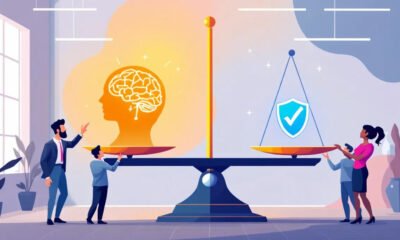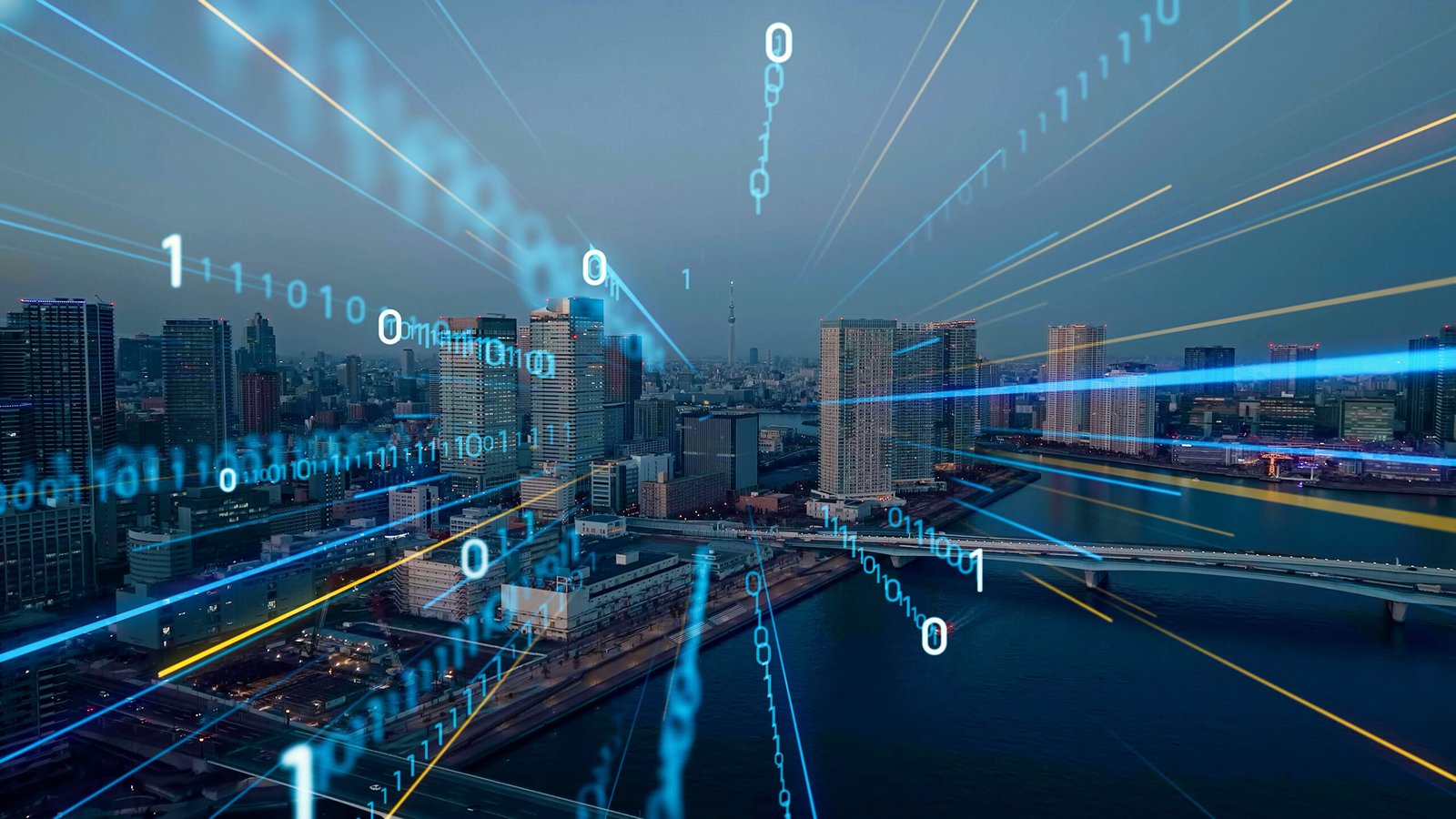For organizations exploring connected technologies, the conversation around the Internet of Things (IoT) has shifted. They are looking to make devices smarter, responsive and capable of operating with greater insight.
The Artificial Intelligence of Things (AIoT) combines the sensor-driven, networked structure of IoT with the decision-making power of artificial intelligence (AI) at the edge to collect and act on data. This generates insights to help businesses improve efficiency and reliability and streamlines user experience.
Explore what AIoT is, its benefits and use cases below.
What is AIoT?
AIoT is the convergence of AI with IoT. The technology brings intelligence to devices that connect and transmit data, transforming them into systems that interpret information, learn from patterns and support decision-making.
The key components of AIoT systems include:
- Sensors and actuators: Sensors interact with the surroundings by collecting and measuring data, while actuators translate instructions from the AI system into actions.
- Connectivity: Connectivity solutions enable communication between devices.
- Edge computing: Devices equipped with embedded AI chips or processors handle data processing to improve response times.
- AI models: AI algorithms analyze patterns, detect anomalies, forecast trends and support automated decision-making. These models are trained on historical or real-time data and deployed at the edge or in the cloud.
- Cloud infrastructure: The cloud stores large volumes of data and supports remote device management and software updates.
The difference between IoT and AIoT
IoT systems collect data from sensors, transfer it through networks and store it in the cloud for later analysis. These systems may need oversight to make decisions based on the data collected. This creates delays and increases dependence on bandwidth.
AIoT embeds intelligence closer to where data is generated. It reduces latency and the bandwidth required to move data. By analyzing and interpreting data at the edge, it streamlines decision-making, allowing businesses to react faster to changing conditions.
AIoT architecture
Explore how AIoT’s architecture allows it to collect, analyze and share information.
Edge computing AIoT
Edge-based computing has the following layers:
- Collection terminal layer: This includes sensors, cameras and mobility devices that gather information from surrounding environments.
- Connectivity layer: This layer consists of hardware and software that transmits data to nearby edge devices.
- Edge layer: Edge AI processors handle real-time analytics, pattern recognition and insight generation.
Cloud-based AIoT
Cloud-based AIoT layers include:
- Device layer: This layer includes beacons, sensors, embedded devices and tags that collect and transmit data.
- Connectivity layer: The connectivity layer comprises software and hardware that facilitate secure and reliable data transfer to the cloud.
- Cloud layer: AI workloads are run here for analysis and insights.
- User communication layer: The user communication layer interfaces with dashboards, apps or web portals for the end user.
Benefits of integrating AI in IoT devices
Implementing a new technology should drive measurable outcomes in performance, cost and improve user experience. Here are the benefits of connecting devices to AIoT.
1. Boosts operational efficiency
AIoT increases efficiency by enabling systems to respond to conditions in real time. When decisions are made at the edge, devices can automatically adjust behaviors.
This means:
- Heating, ventilation, and air conditioning (HVAC) systems regulate airflow based on occupancy patterns.
- Supply chains reroute based on traffic or inventory signals.
- Machinery modulates speed or power use in response to production demand.
- The result is smarter resource use, better coordination and fewer interventions.
2. Enhances safety
AIoT improves safety by enabling instant decision-making, which helps prevent accidents.
For example:
- Edge-enabled cameras detect unauthorized access or unusual motion patterns and trigger alarms immediately.
- Equipment shuts down or enters safe mode if abnormal vibration or heat is detected.
- Smart infrastructure manages traffic flows or alerts authorities to emergencies before a hazard escalates.
3. Reduces human error
By automating data interpretation and decision-making, AIoT reduces the room for human error in routine or high-risk tasks. In sectors where conditions change rapidly, AI-enabled devices adjust irrigation or voltage levels automatically.
In administrative settings, AIoT monitor systems and flag inconsistencies or risks that might be overlooked. It supports teams by handling the repetitive, high-precision tasks where mistakes may slip through.
4. Improves decision-making
With access to real-time data, historical trends and contextual cues, AIoT recommends or takes action based on potential outcomes. For example, in manufacturing, AIoT identifies production bottlenecks and suggests changes to scheduling. In smart cities, traffic data combined with weather and event schedules drive predictive rerouting. This capability augments human judgment to streamline the gathering and analysis of insights.
5. Streamlines predictive maintenance
By monitoring equipment health and comparing it to past performance data, AI models detect subtle signs of wear, imbalance or malfunction before failure occurs. This helps prevent costly downtime. Additionally, technicians are alerted to service needs when they are required, rather than relying on fixed schedules or post-failure repair.
6. Provides scalability
As more devices are added, the system becomes more intelligent. New sensors or devices feed data into shared models, enriching the entire system. Firmware and AI models are updated remotely, and because intelligence resides at the edge, the system doesn’t become dependent on a single hub. This flexibility allows businesses to scale while maintaining performance and control.
7. Maximizes data value
AIoT systems extract and turn data into meaningful, actionable outputs. This reduces data overload while uncovering patterns some analytics tools might miss. For example, temperature fluctuations combined with vibration readings in a cold storage unit might signal compressor strain. AIoT flags this before damage occurs. It also enables real-time dashboards for operations teams, providing visibility into system health and performance metrics.
8. Helps manage energy
The system enables low energy use by allowing devices to self-optimize based on context. For example, lighting systems in smart buildings dim or shut off based on occupancy. Industrial machines shift loads to off-peak hours, while electric vehicles and grid systems balance loads in response to demand and supply.
This level of precision reduces energy bills and supports green initiatives, helping business demonstrate their environmental responsibility.
9. Supports personalization
At the consumer and user experience level, AIoT allows for tailored and intuitive engagements. Devices learn user preferences, anticipate needs, and adjust accordingly. For instance, thermostats learn daily routines and adjust temperatures as needed. Digital signage in retail adapts based on customer flow and demographic signals, providing an exceptional user experience. Even medical devices can personalize treatment or therapy based on individual patient concerns.
AIoT brings contextual awareness in every interaction, making devices feel more aligned with consumer needs.
Considerations when implementing AIoT
AIoT has several benefits. However, businesses should keep the following considerations in mind when deploying the technology:
Data privacy and security: AIoT devices collect and process vast amounts of data, some of which may be sensitive, personal or proprietary. This makes privacy and security a priority in industries adhering to strict privacy regulations. Businesses should map out where and how data is being used, and align with security policies, regulatory requirements and industry standards.
Interoperability: Ensuring your systems are interoperable across vendors, protocols and applications can be complex in legacy arrangements. Open standards and flexible connectivity options can reduce integration friction. Businesses can partner with providers who factor in interoperability. They can offer customizable solutions that can plug into existing systems instead of requiring complete overhauls.
System complexity: Building a cohesive and balanced system requires specialized expertise. Businesses can work alongside partners who specialize in edge computing, embedded systems and connectivity integration to reduce friction in design and deployment. With the right support, complexity becomes manageable.
AIoT applications and examples
As AIoT matures, intelligent edge devices may help various sectors meet their needs. Below are the use cases of the system in different industries.
Manufacturing
Embedded AI processors in industrial equipment monitor vibration, pressure and temperature to detect early signs of mechanical failure. This makes it possible to perform maintenance before problems interrupt production. Computer vision systems powered by AI also support inspection on assembly lines, automatically flagging defects or inconsistencies in products.
These tools detect variations invisible to the naked eye, raising quality control standards while reducing manual inspection workloads.
Facilities also use smart sensors to handle energy consumption. By tracking usage patterns, models suggest optimizations or adjust systems during peak hours, helping factories control costs.
Smart home technology
In residential settings, AIoT enables homes to respond to owners’ behavior. For example, far-field voice recognition allows devices to understand commands even in noisy conditions or from across the room.
Occupancy sensors and AI-driven climate control systems work in tandem to adjust temperatures and lighting based on who’s home, what rooms are in use and time of day preferences. These features reduce energy consumption while enhancing comfort.
Biometric authentication methods like fingerprint or presence-based access help control smart locks or safes. These systems learn user routines and flag irregular access attempts or unexpected activity.
Smart cities and public infrastructure
One common use case in smart cities and public infrastructure is traffic optimization. By combining data from cameras and road sensors with AI, traffic lights adjust based on vehicle and pedestrian flow, easing congestion and improving safety.
Sensors across cities monitor air quality, noise pollution and water infrastructure. When they exceed thresholds, relevant departments use these insights to create quality standards, assess law compliance and notify the public about environmental conditions.
Retail
In retail, AIoT is driving a shift toward more responsive, tailored in-store experiences while giving businesses visibility into their operations. Smart cameras and shelf sensors monitor customer movement, identify high-traffic zones and optimize product placement. For example, interactive kiosks, enhanced by touch interfaces, adjust content based on user engagement, providing dynamic recommendations or support. These systems personalize the experience and reduce the need for additional staff.
Smart shelves equipped with weight sensors and computer vision detect when items are low or misplaced, automatically triggering restocking processes or alerting staff. This reduces out-of-stock scenarios and makes inventory manageable.
Health care
Wearable devices equipped with AI monitor vital signs and detect patterns that might indicate a problem before symptoms worsen. These insights are then shared with health care providers, enabling early intervention.
In hospitals, edge computing AI devices monitor patients in intensive care units. These systems process data to flag anomalies, supporting faster response times in intervention.
Diagnostic imaging is another area where AIoT is gaining ground. Devices embedded with AI analyze scans for signs of disease, accelerating diagnosis and supporting radiologists by flagging subtle indicators they might miss.
Agriculture
In agriculture, AIoT systems help farmers operate precisely and sustainably. Smart soil sensors monitor moisture, nutrient content and pH levels, sending this data to processors that determine optimal watering or fertilization schedules. This reduces the overuse of resources and helps crops grow under optimal conditions.
Computer vision applications also scan plants for signs of disease or pest infestation so that farmers use targeted interventions, preventing widespread crop damage.
Weather stations powered by AI models analyze local setting patterns and historical trends to recommend planting schedules or harvesting times. This leads to better crop yield, less waste and efficient processes.
Telecommunications
Telecom providers operate vast and decentralized infrastructure, making AIoT valuable for network visibility and uptime. AI-enabled edge monitoring systems track performance indicators to help provide reliable service to end users. These systems help automate routine diagnostics and preemptively schedule maintenance.
Additionally, smart energy systems manage consumption based on load and demand, supporting sustainability and lowering operational costs.
Energy
In energy and utilities, smart grids collect data and feed it into AI models that analyze consumption patterns, detect anomalies and make recommendations for efficiency improvements.
Distributed energy resources like solar panels or wind turbines use edge-based AI to optimize performance. For instance, processors might adjust the tilt angles of solar panels in response to changing light conditions.
Transportation and logistics
In autonomous or semi-autonomous vehicles, edge AI systems handle decision-making, detect obstacles, adjust routes and improve driver safety. These systems process visual and sensor data to avoid delays associated with sending everything to the cloud.
In warehousing operations, AI-driven systems manage inventory and adjust to supply demands, automate stock replenishment and optimize floor layouts. This boosts throughput without requiring constant human oversight.
Implement IoT AI solutions
Synaptics offers a comprehensive portfolio of advanced human interface solutions designed to help businesses implement AIoT. Our sensing, processing and connectivity systems help you create devices that respond in real time.
With robust connectivity options across wireless standards and protocols, we ensure your devices stay responsive and reliable wherever they’re deployed. Our solutions are flexible and scalable, and are optimized for low-power, high-performance settings.











































